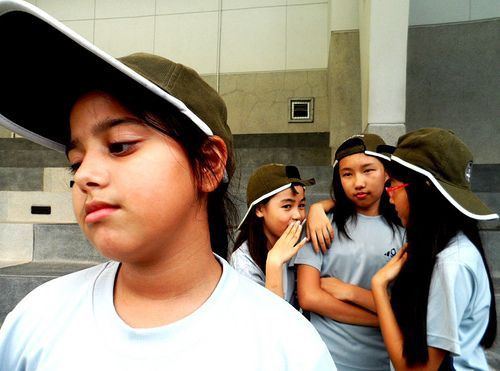Bullying's Lingering Negative Effects: Childhood Bullying Has Impact On Mental, Physical Health For Years

The torturous effects of childhood bullying may extend well past the actual bullying’s end, a new study finds, as kids who were mentally and physically abused in adolescence carried the emotional damage into their teen years.
It may be easy to chalk up bullying to “kids being kids,” but the damage inflicted, both physically and mentally, is as real as the abuse suffered when adults do it. In fact, it may be worse. A young, developing brain is still in the midst of learning its baseline perceptions about the world, so when the child is exposed to daily harassment, he or she learns to internalize the abuse as normal. Eventually, safety feels like a luxury.
While decidedly preventable, bullying has remained all but a staple of American educational systems for decades. Data from the National Center for Educational Statistics and Bureau of Justice Statistics reveals one-third of all children in the U.S. have experienced at least some form of bullying. Among middle school students, who are most often the victims of bullying, approximately half of all kids have been bullied at one time or another. Unfortunately, only a third of all victims ever report the abuse.
To better understand the role bullying plays in kids’ lasting mental health, researchers from Boston Children's Hospital tracked a group of 4,297 children and adolescents from fifth to tenth grade. The team found that not only does bullying stick with kids for years after their abusive episodes, but chronic bullying leaves greater damage than bullying that happens only occasionally.
"Our research shows that long-term bullying has a severe impact on a child's overall health, and that its negative effects can accumulate and get worse with time," said study co-author Dr. Laura Bogart, from Boston Children's Division of General Pediatrics, in a statement. The findings also uphold the idea that early bullying intervention is the key to minimizing a child’s lasting damage, Bogart added.
Among the effects of chronic bullying — at any age, the team found — were depressive symptoms, feelings of lower self-worth, and, interestingly, numerous physical limitations. Kids who were frequently bullied reported greater difficulties walking, running, and participating in sports. What’s more, those who were had previous been bullied and also said they were currently being bullied displayed the lowest mental health scores of them all.
Combating bullying’s pervasiveness depends entirely on adults’ ability to recognize the signs before any mental or physical damage is done, Bogart and her team argue. One key sign may be a child’s recent unwillingness to go to school, though the signs may also be more obvious in the form of heightened anger or sadness. What the team knows for sure, however, is that addressing the problem isn’t as simple as one targeted method.
"Anti-bullying programs are most effective when they involve the whole school — meaning that policies, such as clear rules, are in place against bullying, and when everyone at the school feels responsible for noticing and calling attention to bullying," Bogart told Medical Daily. Students should learn not to act as passive witnesses if they see bullying take place, and adults should instill in kids ideas of respect for other students and "about speaking up against bullying, and about telling an adult right away if he or she is being bullied."
Source: Bogart L, Elliott M, Klein D, et al. Peer Victimization in Fifth Grade and Health in Tenth Grade. Pediatrics. 2014.



























